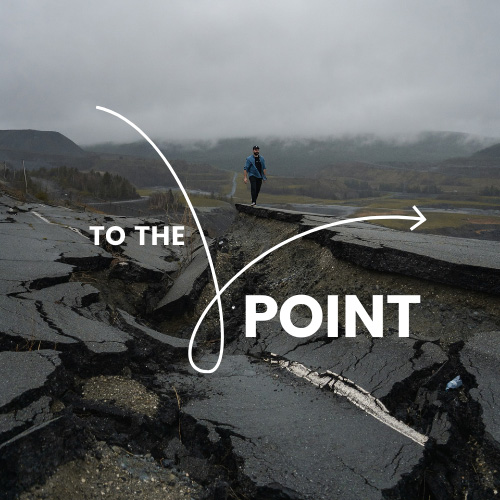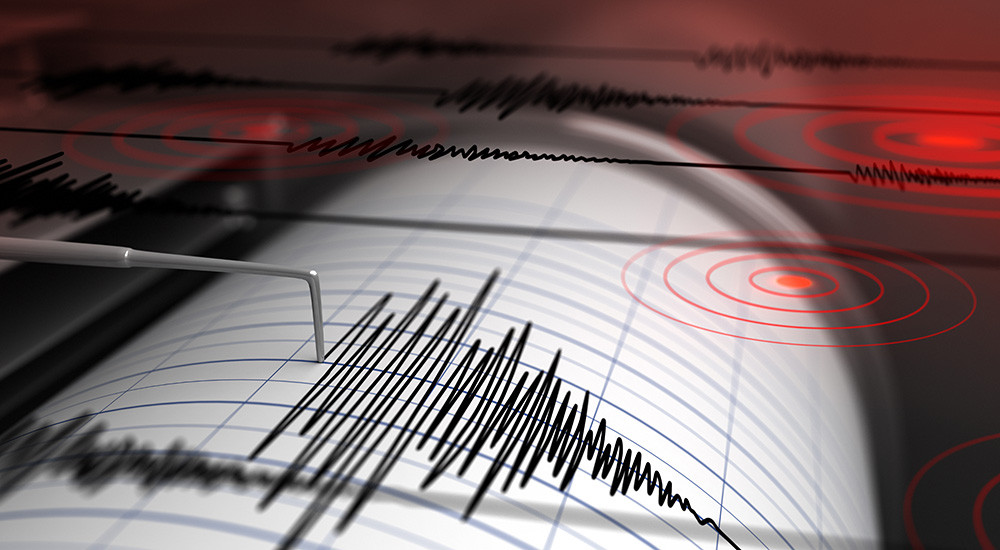To the Point: What Causes Earthquakes, and Is Climate Change Involved?
 To the Point provides insights from AU faculty experts on timely questions covering current events, politics, business, culture, science, health, sports, and more. Each week we ask one professor just one critical question about what’s on our minds.
To the Point provides insights from AU faculty experts on timely questions covering current events, politics, business, culture, science, health, sports, and more. Each week we ask one professor just one critical question about what’s on our minds.
Earthquakes: What causes them, and is climate change involved?
The surface of the earth is broken into about 14 major plates (and many minor ones). These plates are always on the move, and most earthquakes occur along their edges as they run into, slide past, or separate from each other. The plates are getting pushed around by convection currents in the mantle, which moves them between 2 and 20 cm per year. Frequently, the sliding plates “lock up” and bend as pressure builds up. Earthquakes are the sudden release of that pressure.
The strength of the quake depends on how much energy is released, but also the amount of earth movement and the depth of the quake. Earthquakes are not influenced by climate change, although plate tectonics, of which earthquakes are a manifestation, can impact climate over vast periods of geological time.
 The earthquake that stuck Turkey and Syria two weeks ago was shallow one (17 km below the surface) with a magnitude of 7.8, and it had major impacts along a 190 km by 25 km area. The area around Turkey is very geologically active. There are three plate boundaries in the area; the Arabian, the Anatolian (most of Turkey is on this one) and the African. The Arabian plate is pushing the Anatolian plate west, and the earthquake was between these two plates (the East Anatolian Fault). The last large earthquake (a 7.6 in 1999) was along the North Anatolian Fault, and it also resulted in major infrastructure damage, killing more than 17,000 people and leaving a quarter of a million people homeless.
The earthquake that stuck Turkey and Syria two weeks ago was shallow one (17 km below the surface) with a magnitude of 7.8, and it had major impacts along a 190 km by 25 km area. The area around Turkey is very geologically active. There are three plate boundaries in the area; the Arabian, the Anatolian (most of Turkey is on this one) and the African. The Arabian plate is pushing the Anatolian plate west, and the earthquake was between these two plates (the East Anatolian Fault). The last large earthquake (a 7.6 in 1999) was along the North Anatolian Fault, and it also resulted in major infrastructure damage, killing more than 17,000 people and leaving a quarter of a million people homeless.
About the Author

Working in biogeochemistry and ecology, Professor Stephen MacAvoy has been particularly interested in how both nutrients and contaminants flow through, and are incorporated by, aquatic ecosystem components. Research and consulting activities have taken him to the Gulf of Mexico hydrocarbon seeps, Barbados, 11 USA States, and other locations. Professor MacAvoy obtained his PhD from the University of Virginia in 2000 and conducted post-doctoral work at the University of Georgia. He joined the faculty of American University in 2003 and became chair of the Department of Environmental Science in 2016. Recent publications have appeared in Applied Geochemistry, Environmental Science and Pollution Research, Ecological Engineering and Marine Mammal Science. He is currently conducting research on the inorganic and organic geochemistry of the Anacostia River in Washington, DC.
